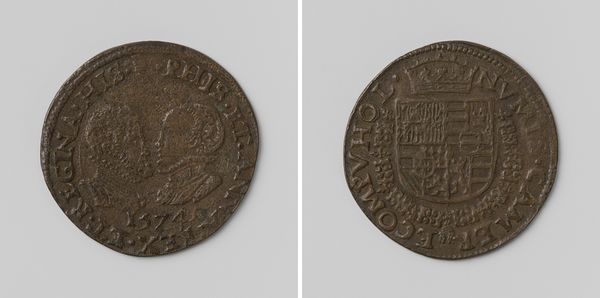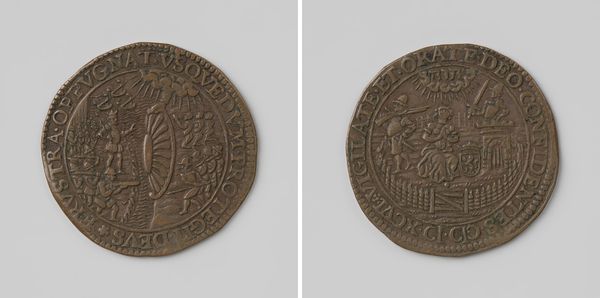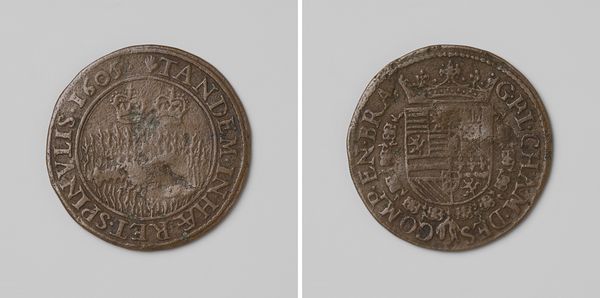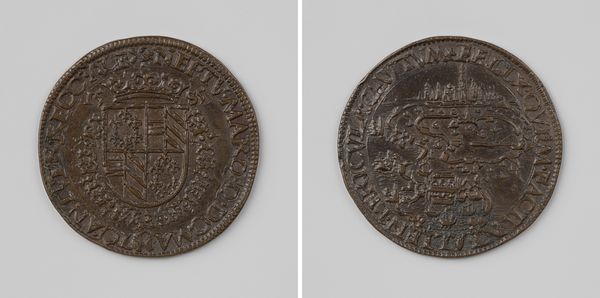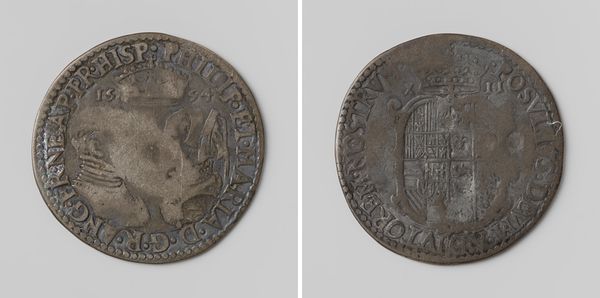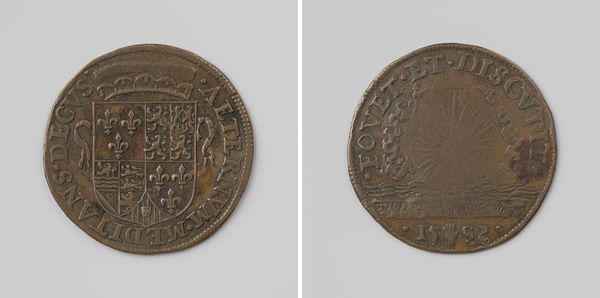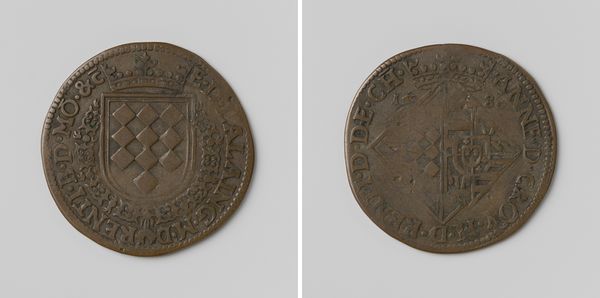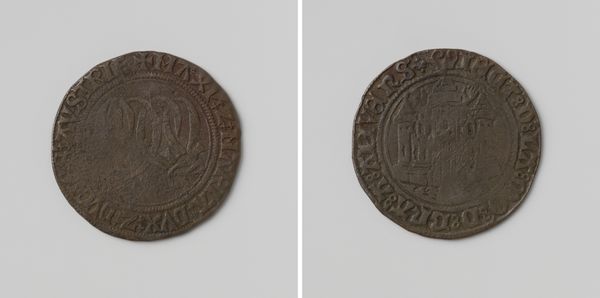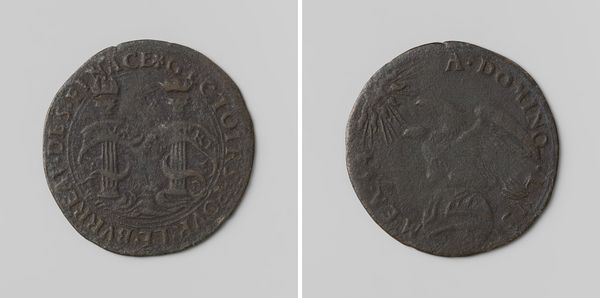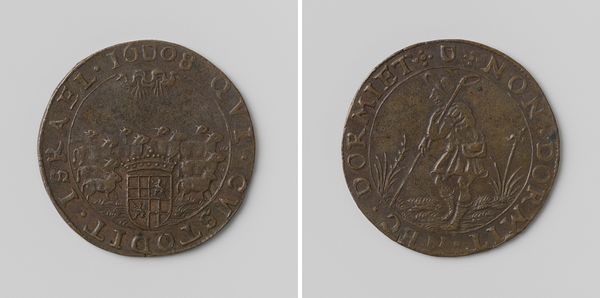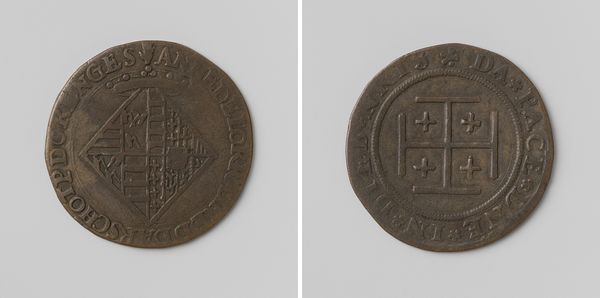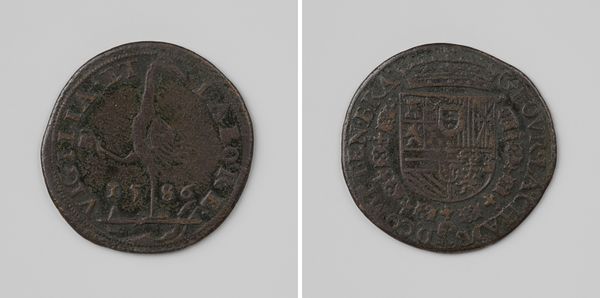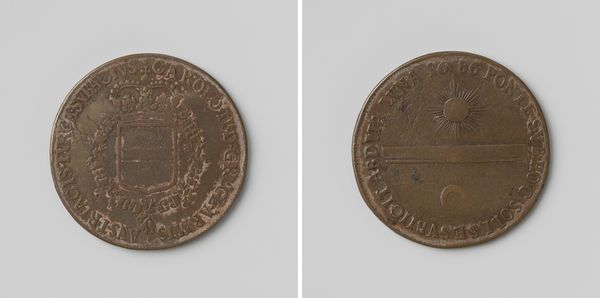
print, metal, relief, sculpture
#
portrait
# print
#
metal
#
sculpture
#
relief
#
sculpture
Dimensions: diameter 2.9 cm, weight 4.60 gr
Copyright: Rijks Museum: Open Domain
Editor: This piece, "Filips III van Croy, hertog van Aarschot, prins van Chimay," dates back to 1567. It looks like it's made of metal, a print of some sort. It gives me the impression of immense historical weight; the etched detail, even on a coin, seems painstakingly crafted. What do you see in this piece that particularly speaks to its historical and material significance? Curator: Looking at this object through a materialist lens, it speaks volumes about 16th-century society. It is not just a portrait but a crafted object reflecting the economic and social conditions of its production. Consider the mining and refining of the metal itself—what labor was involved? The craftsmanship evident points to skilled artisans and the systems of patronage or guild structures that supported them. How does the physical object of the coin, as currency, literally embody and enable the circulation of power and wealth? Editor: So it's not just a likeness of a noble, but a reflection of the entire system that made him possible. How does the use of metal influence the perception of the subject? Curator: Precisely. Metal as a medium denotes permanence, authority. Unlike a painted portrait that might be subject to decay or fire, metal promises longevity. The very act of striking this coin involved force, pressure—a tangible impression of power. Moreover, consider the wear and tear on the coin itself. It's a testament to its journey through countless transactions and hands. What can the coin's circulation tell us about patterns of consumption or exchange within Croy's dominion? Editor: That makes me look at it completely differently. It’s incredible how a small object like this can reveal such broad historical and economic relationships. Curator: Absolutely! Analyzing art from a materialist perspective shifts our focus from purely aesthetic concerns to questions about labor, production, and power. A work such as this allows us to really delve into not just *what* it represents but *how* its materiality helped shaped and maintain power structures of the time.
Comments
No comments
Be the first to comment and join the conversation on the ultimate creative platform.
